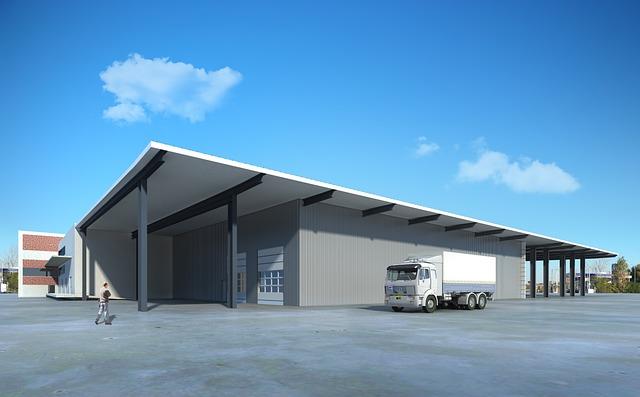Your company must have adequate storage space. Otherwise, processes can come to a grinding halt alongside a simultaneous crippling of the cash flow.

In 2021, it was reported that Britain could run out of warehouse space in a year. While that didn’t precisely come to pass, there continues to be a strain on the supply chain. Having more warehouse space may be one aspect of overcoming these problems. While these storage units can be rented out, some firms choose to build their own.
If you’re going down this route, it’s important to consider some of the best practices required here. Read on for some tips about building a new warehouse for your business.
Involve Key Stakeholders
Warehouses do more than just provide a bit of storage space. They’re an enormous asset for a firm to have that can rewrite logistic capabilities. Because building a new warehouse is a monumental decision, it’s a good idea to involve key stakeholders in the planning and building process. They may be both inside and outside the company. By collating a wide range of stakeholder responses, you can anticipate any project mistakes more eagerly and take steps to avoid them.
For example, some stakeholders may be able to identify areas where improper equipment is being used or impractical storage measures are carried out for their purposes. They may desire a different location for a range of reasons. While compromise must be sought, keeping key stakeholders informed is essential.
Of course, it’s also a courtesy to let stakeholders know that a radical change is underway. It may generate excitement and lead to more promising business deals in future. Keep everybody in the loop.
Find Quality Local Services
Warehouse construction is a huge undertaking. The project should be approached as efficiently as possible. It might be the better course of action if you were to find builders near you. They may be able to source better deals from vendors and suppliers and bring down emissions around the project due to a shorter distance to travel. Moreover, any local businesses you trade with may be able to recommend certain specialists, giving you greater assurances.
MyBuilder can help you locate a builder near you for projects of this scope. If you post the job you need to do on their platform, you’ll be able to field responses from different tradespeople. Before replying, you can browse their profiles and work history, ensuring they’re the right fit for the project you have in mind. You can take a look at the reviews of local builders too.
More tradespeople can be found on the platform too. Architectural designers, plumbers, roofers – they’re all here. Explore all of your options here.
Choose a Great Location
Warehouses can sometimes seem like they’re tucked away in an obscure area. However, they’re often strategically placed and should be. What’s road access like? If the warehouse is near a motorway, the goods’ shipping and delivery will be much faster. Are any ports nearby? International cargo will be sent out to customers and clients much sooner. The same could be true if airports aren’t far away as well. These logistics are more than just a small perk. They can supercharge the growth potential of your business.
If your warehouse is further away, it may open up your firm to a new customer base elsewhere. That said, depending on your quality of service so far, existing customers and clients may be irked by that decision. Ultimately, there’s some nuance around the location when building a brand-new warehouse, so keep these considerations in mind.
Review Compliance Procedures
Warehouse construction is a permitted development. Consequently, you don’t require an application for planning permission. However, there are certain conditions you must follow for the successful build of a warehouse. For instance, you will need to adhere to size requirements. No new warehouse can exceed the height of 5m if the curtilage boundary is within 10m. For other situations, no new warehouse should be higher than the highest building within the curtilage boundary or 15m.
Moreover, a newly built warehouse cannot exceed a gross floor space of 100 square metres in designated land or that used for scientific pursuits. The limit is 200 square metres in other contexts. There are more size requirements to follow, so ensure that you do your research to set reasonable expectations.
Some firms hear the words’ no planning permission’ and believe they have a pass to do whatever they wish to. Your business could experience a significant loss of resources and reputational damage if you build a warehouse without regard for rules and regulations. Top-tier builders should know these rules, but rogue traders might skirt around them, so learning this information can help you identify quality services too.
Conclusion
Building a new warehouse is challenging, but help is available. Stakeholders can contribute useful ideas, and online platforms for finding tradespeople can give you instant access to the experts you need. There are some key considerations around location and building regulations, but taking those into account will ensure a better-prepared build.




Comments are closed.